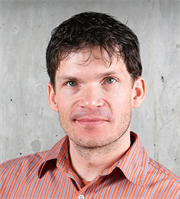Creative and innovative product solutions fuel the success of medical device companies. For decades, traditional brainstorms (aka the Osborn method) have been used to generate ideas with the goal of achieving such success. And it’s undeniable, traditional brainstorms can be great for generating lots of ideas.
In industries like advertising where technical demands are low (and where Osborn had his roots), sheer volume can be enough. But when developing highly complex medical devices, the mountain of “interesting” ideas that result from traditional brainstorming all too often buckles under technical scrutiny. The realities of engineering, scale, ergonomics, human factors, manufacturability and so much more all cause the viable solution space to shrink. What is needed is a more efficient and effective way to generate and refine ideas that are technically viable.
Seed Torrent Brainstorming, a technique I’ve been developing the past few years, is designed to do exactly this. Seed Torrent Brainstorming has three stages:
- Harvesting Seed Ideas. To kick things off, the team lead sends out a short email detailing the problem and includes a few possible solutions to spark ideas and minimize repetition of “obvious” solutions. The email is sent to a wide and varied group which is given a limited amount of time (e.g. 12 minutes or .2 hours) to sketch one or two ideas each. Ideally, this time can be spent over a one-to-two day period, thus allowing for idea percolation wherein the problem space has time to seep into the psyche and solutions can bubble forth. Ideas may either be emailed, or, to stimulate crosspollination and minimize inbox clutter, ideas can be posted on a wall or large board.
- Assimilation. The leader collects the seed idea sketches/descriptions and displays them on a suitable, large-format board, grouping related ideas when appropriate. The seed ideas are briefly introduced and a smaller, core group of individuals, with a deeper understanding of the problem or problem area, engages in a somewhat more traditional brainstorm. This group generates their own ideas but uses the torrent data as “seed” material for cross-linking, modifying, and building ideas, as well as stimulating and allowing other ideas to come to the surface. This phase is actually a blending of the brainstorm with the down selection session that Osborn would have placed in a separate meeting. This fusion of the brainstorm with down selection preserves the deferment of judgment at the beginning of the brainstorm, but incorporates the power of criticism and dissent.
- Refinement. The core team now takes a harder look at the generated ideas which are critiqued, challenged, and refined in order to drill down and reveal underlying problems and illuminate deeper solutions. The refinement stage ends with ideas which are well-vetted and viable for further development. The numbers of ideas at this point will be far fewer than result from a traditional brainstorm, but the quality and technical viability will be far higher.
Healthy criticism is an essential element of the Seed Torrent technique and one that runs counter to the “no bad idea” edict embodied in Osborn’s methodology. As early as 2003, research has shown that suspending criticism is not the most productive manner to run the brainstorm [Nemeth]. In my experience, critique and freewheeling can be combined in the same meeting effectively and without drama. All that is required is a tightly knit, low-ego group that has mutual respect for each other’s skills and talents. In such a group, the friction of a good debate doesn’t slow things down, it ignites the creative thinking and critical analysis required to generate solutions with real potential to stand up to the demands of medical device development. In such a group, individuals don’t care about their own ideas… the whole group is vested in finding the right idea.
The Seed Torrent Brainstorm process preserves small group economics and advantages but allows for the flurry of abstract and unorthodox ideas that a large and diverse group brings to bear in order to augment and pollinate the core group’s creative pathways. The Refinement Stage eliminates detritus and uncovers issues that might be glossed over in a “nice” brainstorm. A torrent group of 20 people incurs a four man-hour cost to the project and does so with minimal invasiveness and disturbance to the company while maximizing the potential for a successful brainstorm.
Exiting the brainstorm with a reasonably vetted idea or couple of ideas will be far more valuable to the engineer or team that is tasked with realizing the solution than exiting the brainstorm with a fist full of ideas that do not stand up to scrutiny. As a systems engineer who is often tasked with taking the brainstorm content and executing on it, I find myself attacking the work with far more excitement knowing that the path ahead has a real chance for surviving the development process and turning into a successful medical device.







